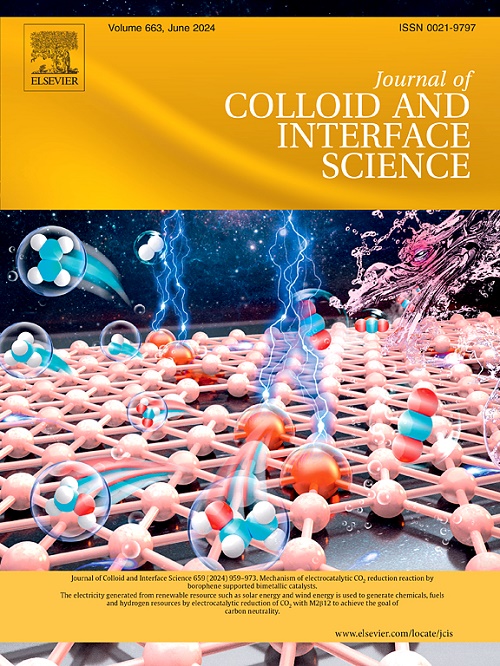用分散钌纳米粒子装饰的过氧化物量子点促进二氧化碳光电还原
IF 9.4
1区 化学
Q1 CHEMISTRY, PHYSICAL
引用次数: 0
摘要
本文章由计算机程序翻译,如有差异,请以英文原文为准。

Boosting CO2 photoreduction over perovskite quantum dots decorated with dispersed ruthenium nanoparticles
High efficiency CO2 conversion materials are ideal for solar to carbon fuel conversion. Halide perovskite quantum dots (QDs) are highly desirable as catalysts and have been extensively investigated in the field of CO2 photoreduction. The major challenge lies in the severe charge recombination and the weak ability to activate CO2. Herein, we have identified dispersed Ru nanoparticles anchored on CsPbBr3 (CPB) QDs as prospective photocatalysts for CO2 reduction at ambient pressure with light irradiation. The optimized 0.45 % CPB@Ru reduced CO2 to CO at a rate of 28.12 μmol g−1 h−1 without any sacrificial agent and co-catalysts, about 4 times higher than that of the CPB QDs (7.03 μmol g−1 h−1). Experiments and DFT calculations reveal that the as-prepared CPB@Ru showed increased photogenerated charge separation, CO2 adsorption/activation and lower energy barriers for the formation of *COOH intermediate, which are crucial for enhancing the photocatalytic CO2 reduction activity. This work provides a convenient pathway for designing high-performance perovskite photocatalysts with high selectivity and high catalytic activity using metal nanoparticle loading technology.
求助全文
通过发布文献求助,成功后即可免费获取论文全文。
去求助
来源期刊
CiteScore
16.10
自引率
7.10%
发文量
2568
审稿时长
2 months
期刊介绍:
The Journal of Colloid and Interface Science publishes original research findings on the fundamental principles of colloid and interface science, as well as innovative applications in various fields. The criteria for publication include impact, quality, novelty, and originality.
Emphasis:
The journal emphasizes fundamental scientific innovation within the following categories:
A.Colloidal Materials and Nanomaterials
B.Soft Colloidal and Self-Assembly Systems
C.Adsorption, Catalysis, and Electrochemistry
D.Interfacial Processes, Capillarity, and Wetting
E.Biomaterials and Nanomedicine
F.Energy Conversion and Storage, and Environmental Technologies

 求助内容:
求助内容: 应助结果提醒方式:
应助结果提醒方式:


